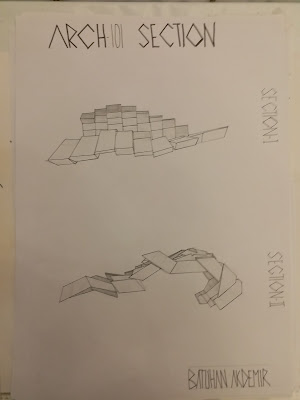Opaque Surface: Cardboard, Balsa sheet
Translucent Surface: Wire mesh, Translucent acetate paper
Stick Materails: Wooden sticks, Metal sticks
We have been working for forming voids for a while. Firstly we made 3 then 5 and finally we reached 17 voids in total system. Making that amount of voids embedded in the desgin system was the both purpose and challange of the assignment.
For arrangement, I decided to form a path that air-flow can follow and, thus, an interrelated system is born. The starting point was the fornation of a group that will be repeated in the system. After that I repeated them in way that the path is not interrupted or blocked. Thus, the design that I will be presenting to jury for prejury is finalized.
With the critics that I got in both jury and critic sessions, I revised my work. The foundation of the work is preserved and it has developped in terms of organizational complexity and the flow between interrelated voids.
 |
| The project and posters of prejury work |
 |
| The project and posters of final jury work |













































